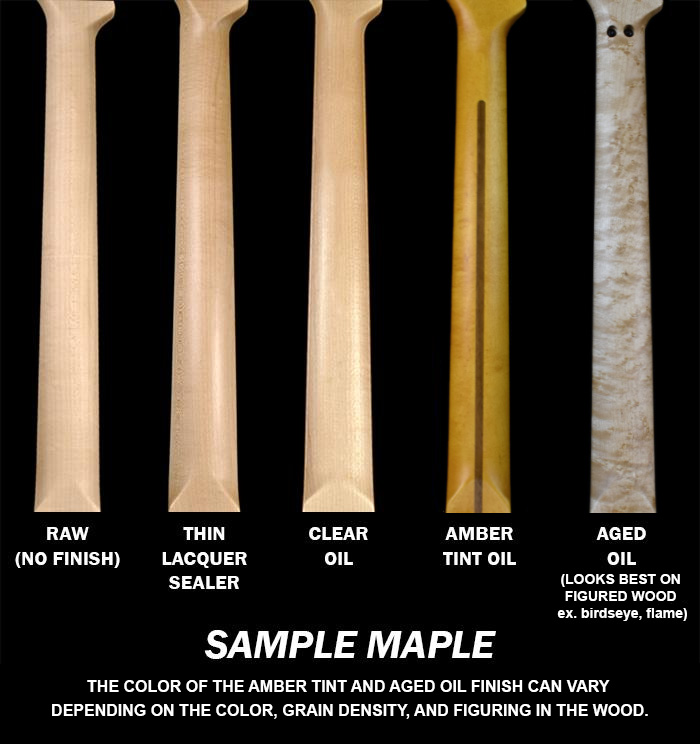Neck Finish Options
When it comes to neck finishes, we provide a range of options, each with its own advantages. Please review the following choices and select the finish that suits your preferences:
Raw
Some clients prefer to receive the neck "Raw" without any finish applied. This option allows individuals to apply their own finish. However, please note that necks purchased without a finish are covered under warranty for only 30 days from the date of delivery. Any issues resulting from atmospheric conditions, such as warping or twisting, are not covered for necks shipped in a raw state. Please keep this in mind when choosing the "Raw" finish option.
Thin Lacquer Sealer
Our preferred pre-finish treatment involves a very thin application of lacquer, resulting in a semi-gloss look and feel. This treatment serves as a sealant for the neck and is sufficient to honor our warranty. The advantage of this option is that the neck is ready for additional coats of lacquer, whether clear or tinted, if desired. Please note that there is a $20 labor cost associated with this process. We do not offer tinted applications for the thin lacquer sealer finish.
Oil
For this option, we hand rub two coats of our own special blend of oils and buff the neck to achieve a satin finish. This results in a smooth and fast-playing neck. Depending on the amount of use, the neck may require future applications of oil. We now offer a tinted application called "Amber Tinted Oil," adding a warm hue to the finish.
Aged Oil
With the aged oil finish, we apply one coat of a special blend of oils that darkens the wood, giving the neck an aged appearance. We then hand rub two coats of clear oil, creating an aged satin look and feel. This finish option is particularly suited for Birdseye Maple, but may not have the same effect on Regular Maple.

As our shop has become increasingly busy, we have decided to focus more on our core business of building custom necks and bodies. While we offer thin lacquer sealer and oil finishes, please note that we discontinued full lacquer finishing services on necks and bodies some time ago. However, we can recommend two shops that provide excellent neck and body finishing options:
MJT Aged Finishes:
They have a longstanding reputation and offer a wide range of finish choices. We have a special arrangement with them, and if you choose their shop as the shipping address during checkout, we can provide "Free Shipping" to them. For inquiries regarding their finishing services, please contact MJT Aged Finishes directly. We will not answer finishing-related questions pertaining to external finishers.
If you have any further questions or require assistance in selecting the appropriate neck finish, please contact us. Our team is here to help and guide you through the process.